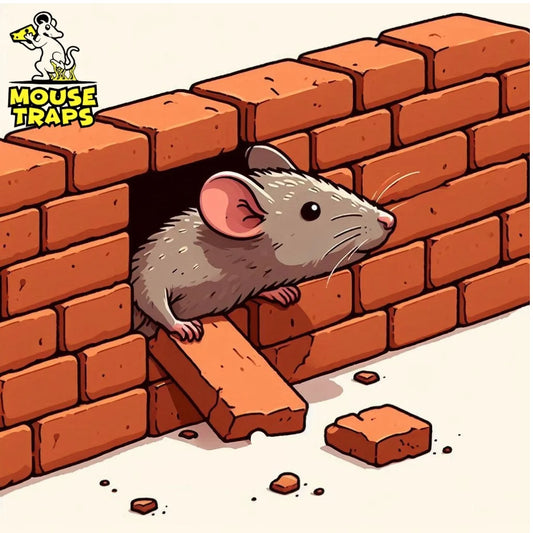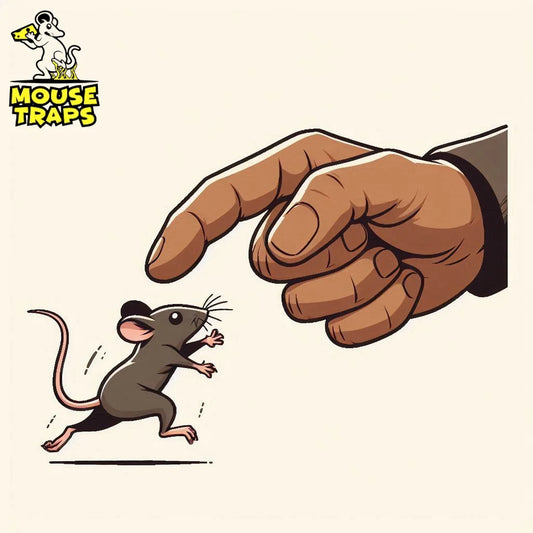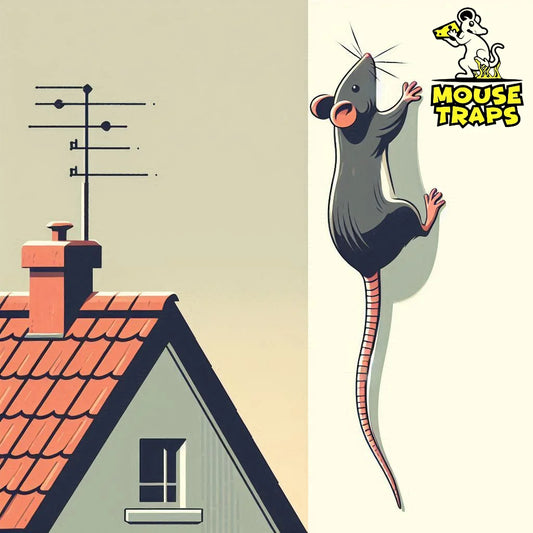Introduction:
Having rats, in your house can be a nuisance causing damage spreading illnesses and giving homeowners a lot of trouble. To deal with rat infestations effectively it's important to find and block the ways they get in. In this guide we'll show you how to discover and close off these entry points to protect your home, from these pests.
Steps You Should Perform:
Inspect Your Home:
Start by conducting a methodical inspection of both the interior and exterior of your home. Begin outside, examining the foundation, walls, roof, and any potential entry points. Check for any spaces, crevices, gaps or entry points that rats might use to enter your house. Be vigilant, around locations where utilities, like pipes, vents, cables and wires enter your home.

Check Attics and Basements:
Rats often seek shelter in attics, basements, crawl spaces, and other secluded areas. Inspect these spaces thoroughly, using a flashlight if necessary, to identify any signs of rat activity or potential entry points. Search for signs of chewing, small animal waste materials used for nesting and greasy marks, on walls or baseboards.

Look for Signs of Activity:
Rats leave behind several telltale signs of their presence. Watch for droppings, dark pellets, commonly discovered near food areas or potential paths. Check for signs of gnaw marks, on wood, plastic or wiring along with indications of materials, like torn paper, fabric or insulation.

Seal Entry Points:
Once you've identified potential entry points, it's crucial to seal them effectively to prevent rats from entering your home. Use appropriate materials depending on the size and location of the openings. For small gaps or cracks, silicone caulk or expanding foam sealant can be used. For gaps or entrances think about utilizing items such, as metal mesh, hardware cloth or sheet metal. Ensure that any seals are tight and secure to prevent rats from chewing or burrowing through.

Live Humane Traps:
Live humane traps are designed to capture rodents without harming them, allowing you to release them back into the wild away from your home. Here's an explanation of how they work and their benefits:
Live humane traps typically consist of a box or cage with a door that closes once the rodent enters the trap. They are usually baited with food to attract the rodents. Once trapped, the rodent remains unharmed inside the cage until you release it.

Benefits:
- Non-lethal: Live humane traps provide a humane alternative to traditional snap traps or poisons, as they do not harm or kill the captured rodents.
- Safe for Pets and Children: Since live humane traps do not use poisons or snap mechanisms, they are safer to use around pets and children.
- Reusable: These traps can be reused multiple times, making them a cost-effective and environmentally friendly option.
- Reduced Odor and Mess: Unlike other trapping methods that may result in dead rodents decomposing in your home, live humane traps allow you to release the captured rodents outdoors, reducing odor and mess.
Sticky Glue Mouse Pads:
Sticky glue mouse pads, also known as glue traps, are adhesive-based traps designed to capture rodents by immobilizing them on a sticky surface. Here's an explanation of how they work and their benefits:
Sticky glue mouse pads consist of a flat surface coated with a strong adhesive. When a rodent steps onto the pad, it becomes stuck to the adhesive and cannot escape.

Benefits:
- Easy to Use: Sticky glue mouse pads are simple to set up and require no baiting or complex mechanisms.
- Safe and Non-toxic: Unlike poisons or snap traps, sticky glue mouse pads do not contain harmful chemicals or pose a risk of injury to pets or children.
- Versatile: Sticky glue mouse pads can be placed in various locations where rodents are active, such as along walls, in corners, or under appliances.
- Effective for Multiple Rodent Species: Sticky glue mouse pads can capture not only mice but also other small rodents such as rats, insects, and spiders.
Repair Damaged Areas:
Rats can exploit even minor damage to gain access to your home. Repair torn window screens, damaged vents, and cracks in the foundation promptly. Replace weather-stripping around doors and windows if it's worn or damaged. By maintaining the integrity of your home's exterior, you can reduce the risk of rat infestations.

Trim Vegetation:
Overhanging branches, shrubs, and dense vegetation near your home can provide rats with easy access to your roof and attic. Trim back trees and bushes to create a buffer zone between your home and potential entry points. Keep grass and landscaping well-maintained to eliminate hiding spots and reduce the risk of rats nesting near your home.

Secure Garbage and Food Sources:
Rats are attracted to sources of food and shelter. Keep garbage cans tightly sealed with lids, and store them away from your home if possible. Avoid leaving pet food or birdseed outdoors overnight, as these can attract rats and other pests. Clean up spilled food promptly, both indoors and outdoors, to minimize the risk of attracting rodents.

Consider Professional Help:
If you're dealing with a severe rat infestation or if you're unsure about how to effectively seal entry points, don't hesitate to seek professional assistance. Professionals, in pest control possess the expertise, practical know how and necessary equipment to evaluate the spots, in your residence and apply tailored remedies. They can also provide monitoring and maintenance to guarantee that your house stays rat free.

Conclusion
To prevent rats, from entering your home it's important to grasp how they behave locate entry points and methodically seal off those openings. Staying alert and consistently maintaining your property are crucial, for creating a living space. By keeping these suggestions in mind you'll have the tools needed to protect your home from intruders!




